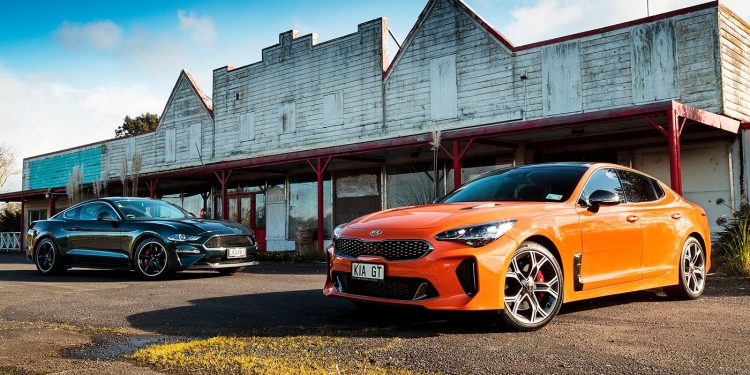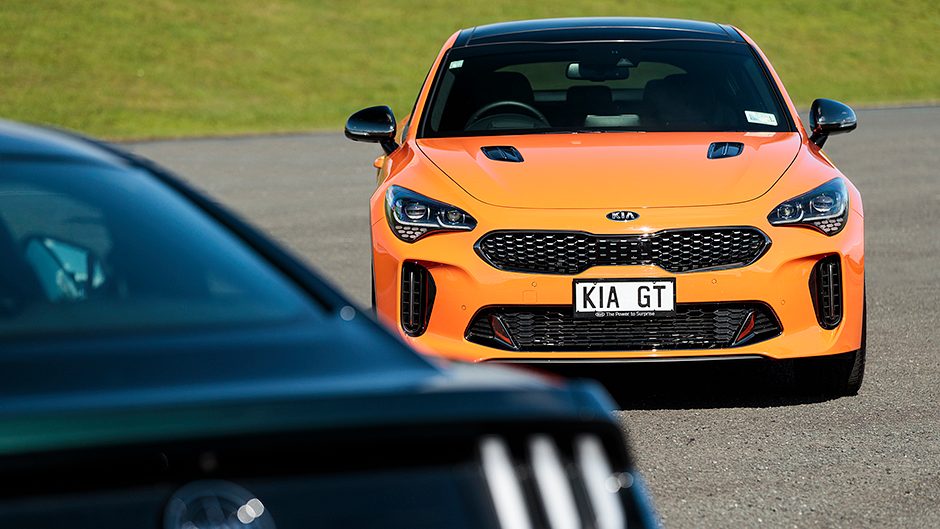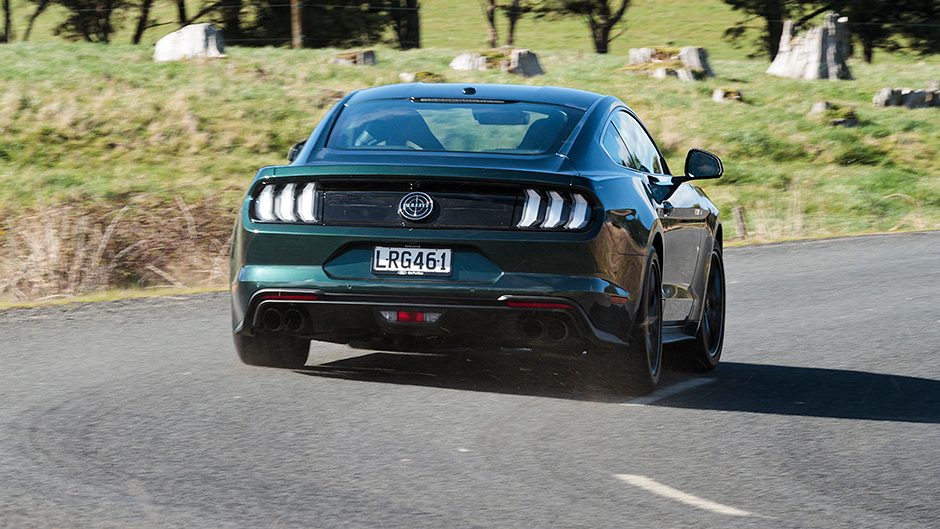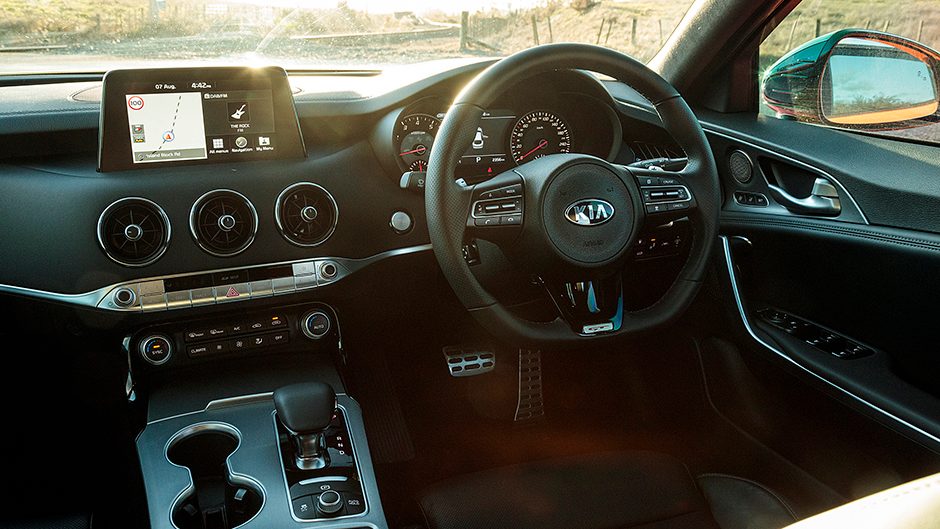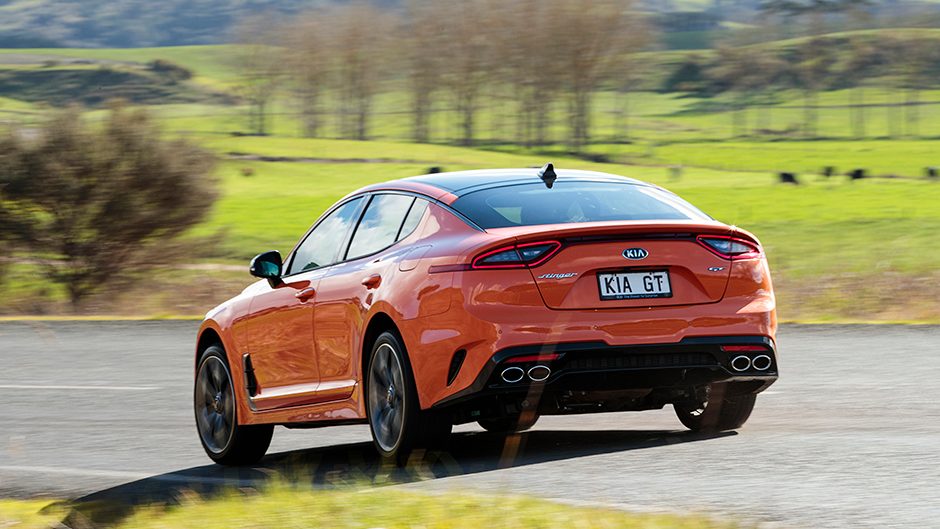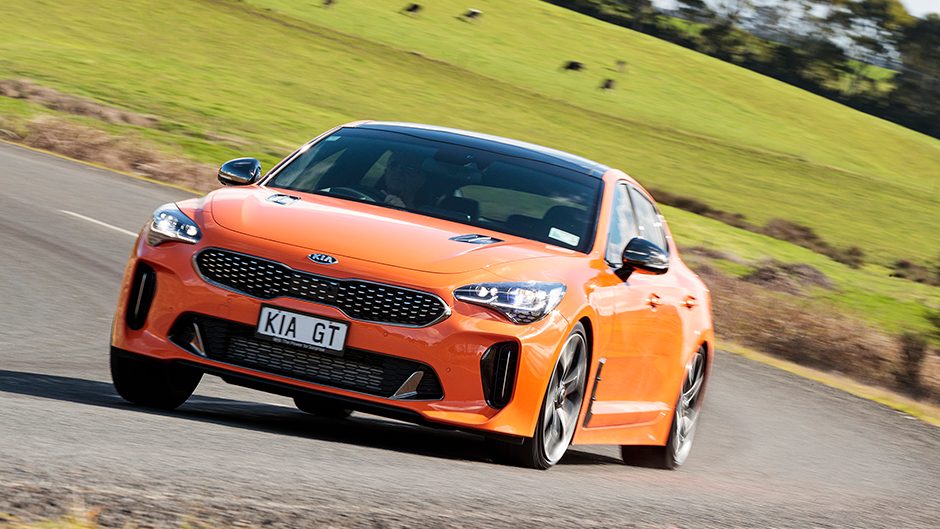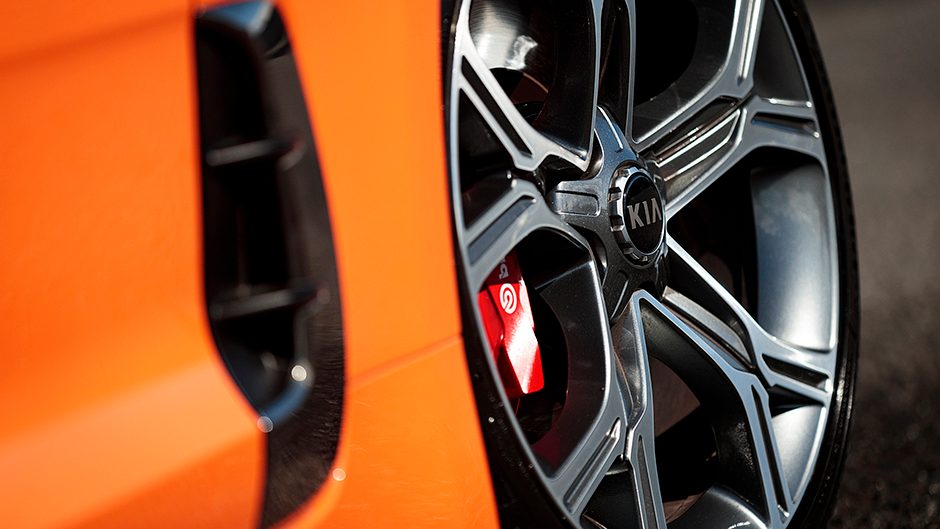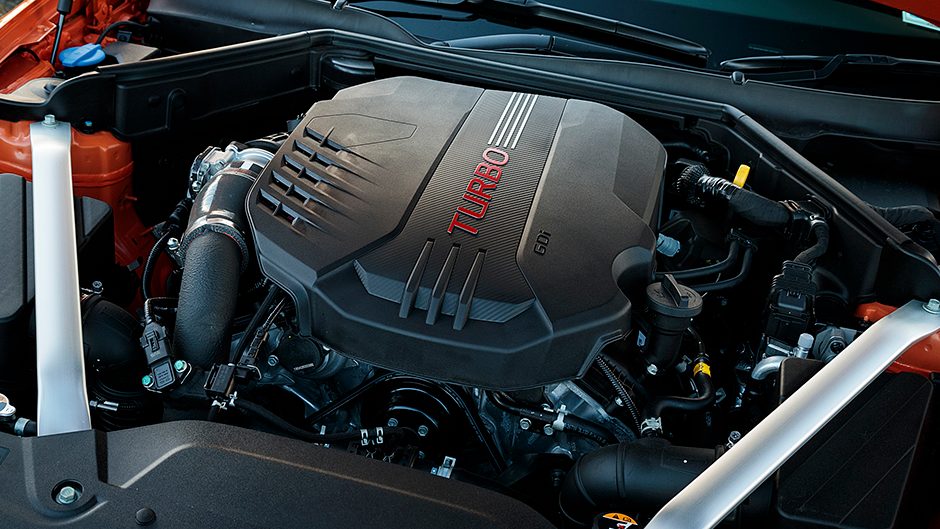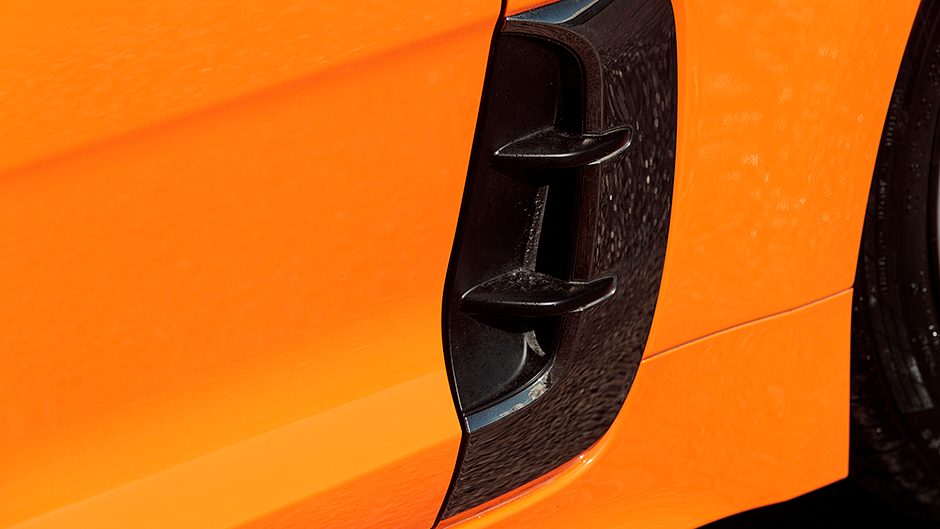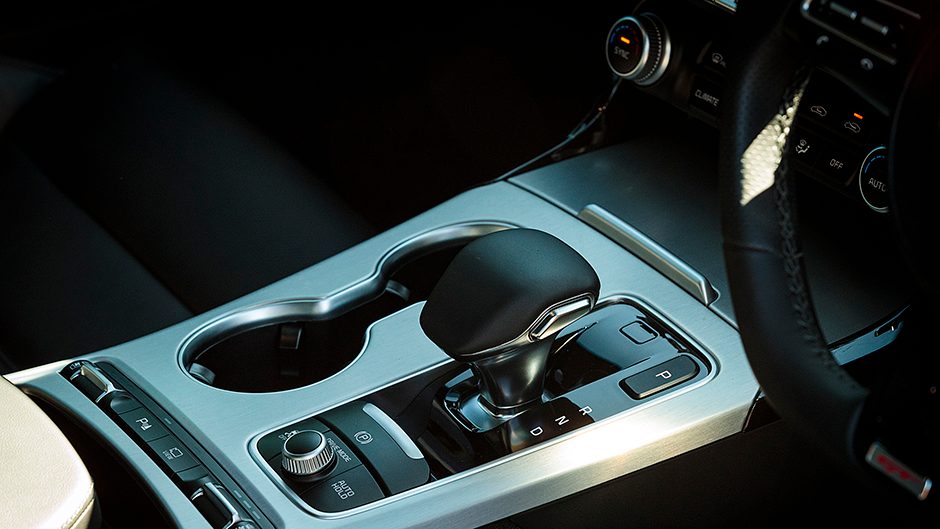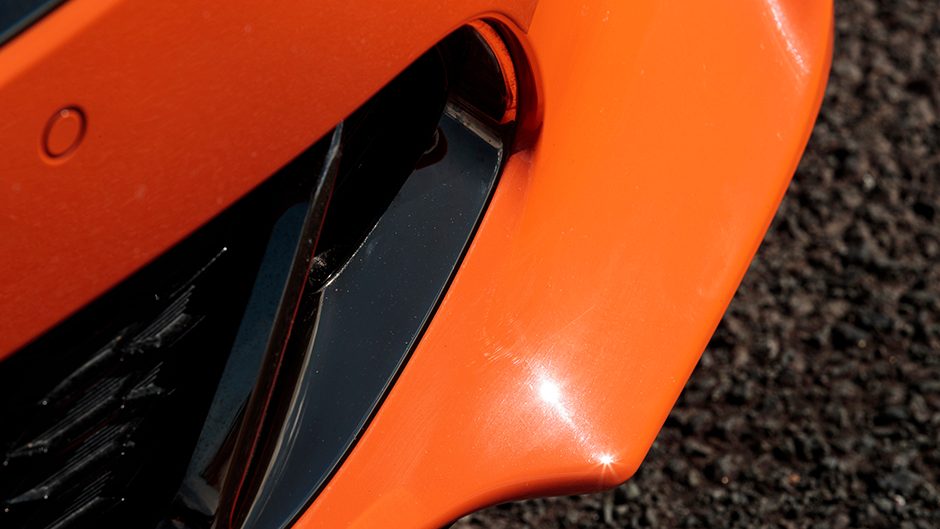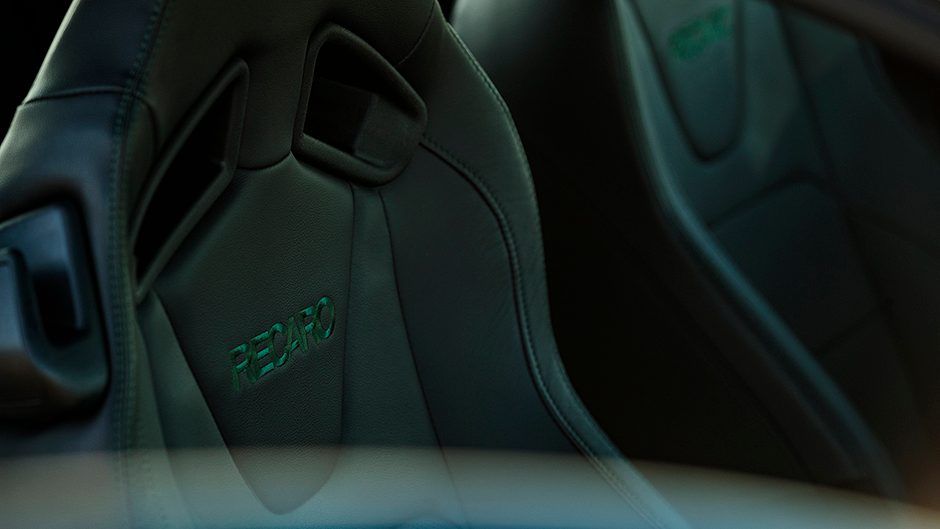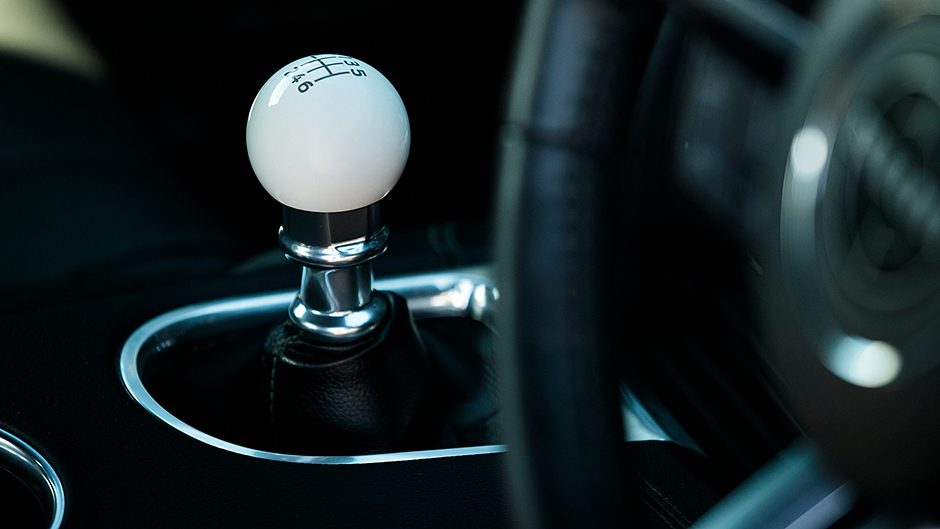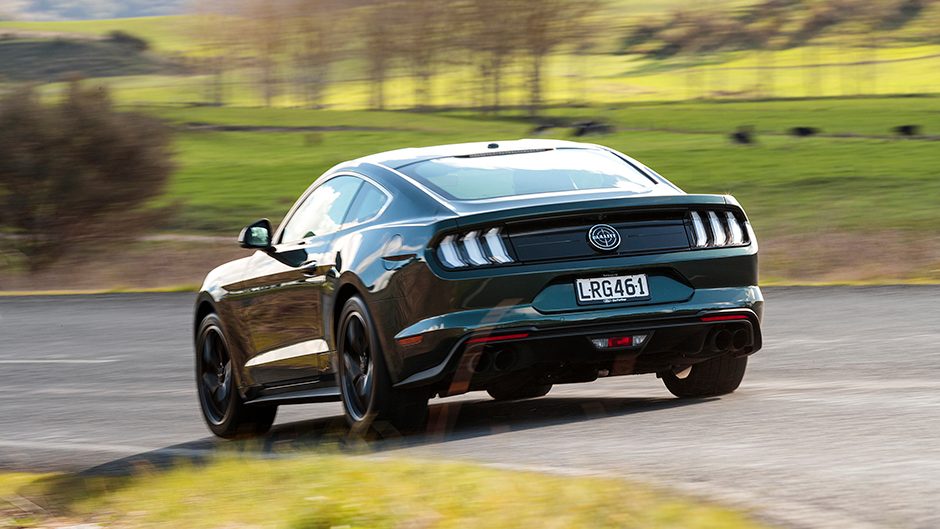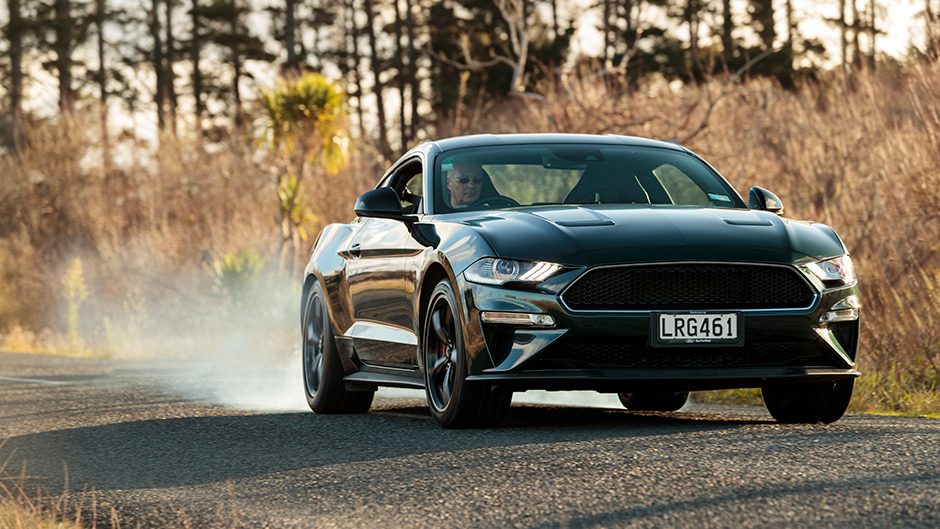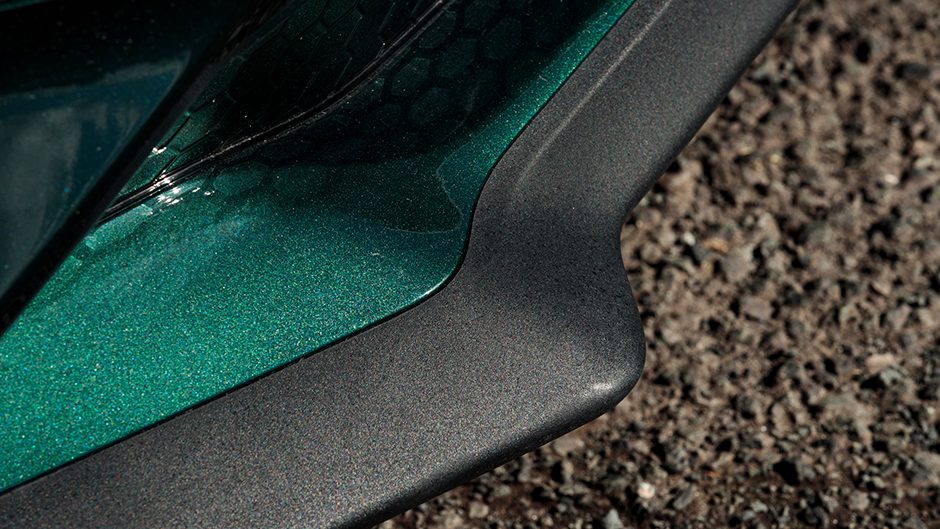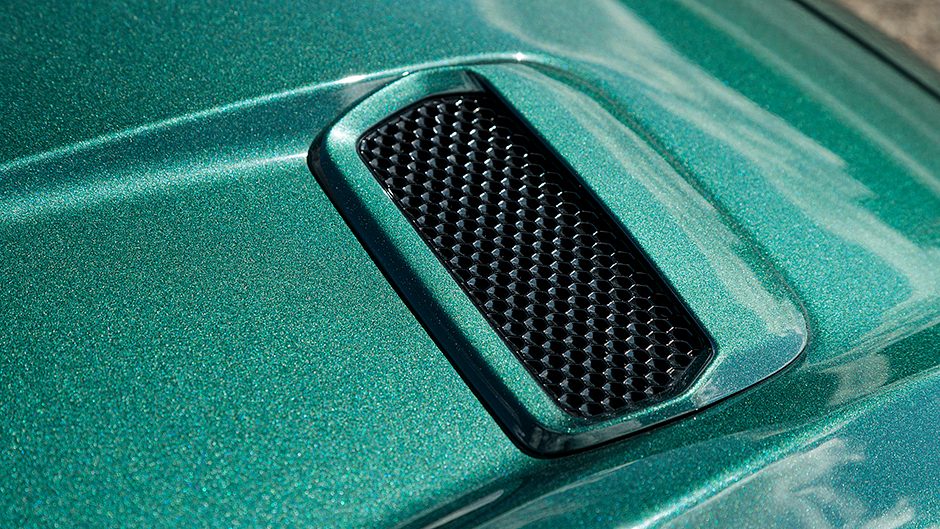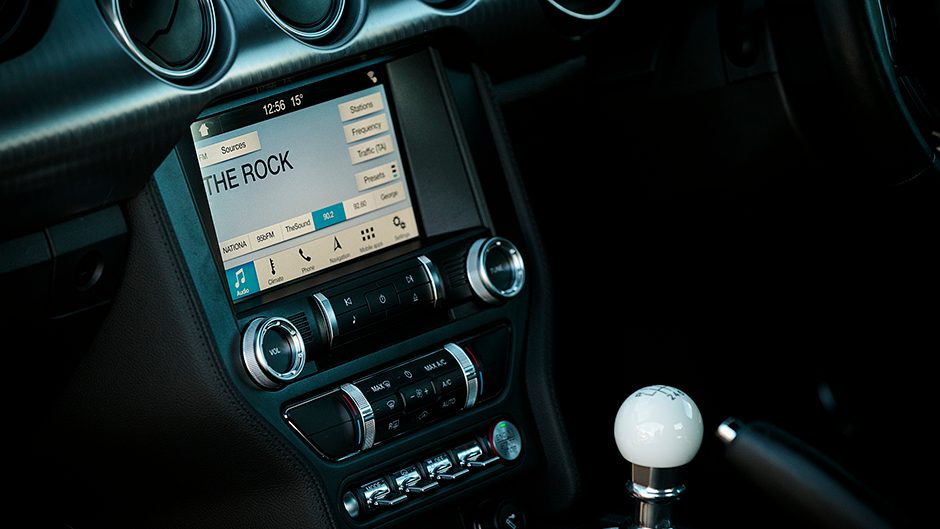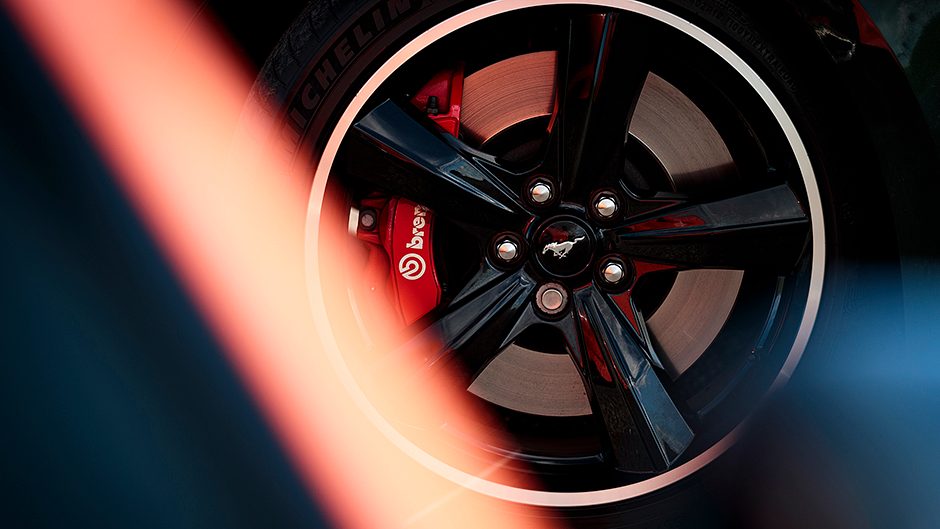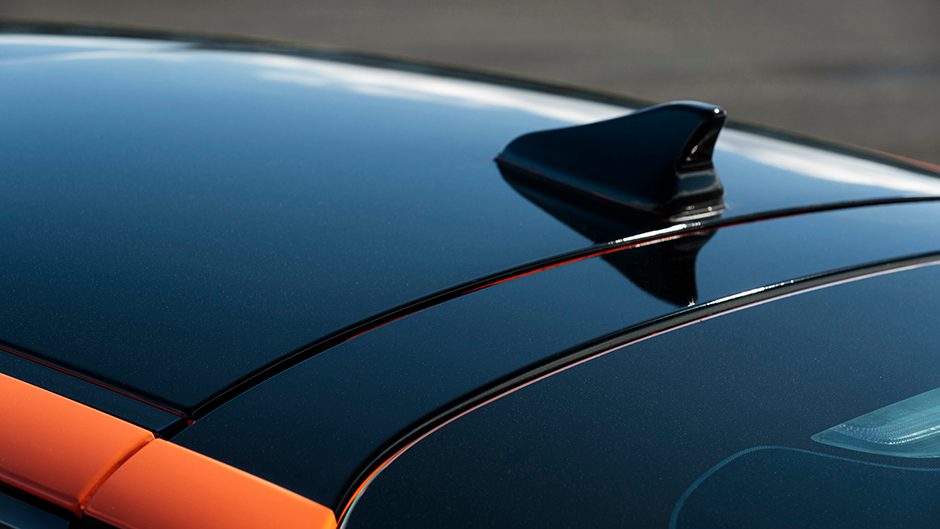2018 Ford Mustang GT Bullitt vs KIA Stinger GT comparison
Words Peter Louisson | Photos Tom Gasnier
They might seem like the odd couple but these two go-hard GTs are more similar than you might think. So which is the go, the retro V8 or the modern turbo V6?
Two of the most exciting sub$100k GTs to debut of late are the pair you’re ogling here, Ford’s Mustang GT, here in Bullitt form and Kia’s Stinger GT as the Sport Neon Orange Pack. Both are a Limited Edition, one has a cool name, the other without quite the ring. They’re both high-power rear-drive GTs, and both these limited offerings are sold out here, so what’s the point then, you’re wondering?
The cars upon which they’re based are still very much available, and are relatively comparable in price, with a roughly $10k difference, if you pretend the Mustang’s a regular GT. Both the six-speed manual and the 10-speed auto version sell for $80,990. Ford didn’t have an auto Mustang GT available when we had the Stinger GT so the manual-only Bullitt it was. Naturally we tried to make like Steve McQueen, but failed rather on that score.
While the engines of this pair share only their V configuration, and the transmissions are at odds, the straight-line performance of these rear drivers is comparable. Styling chops aren’t really on the same page; the Mustang is a modern retro, while the Stinger is simply a modern performance weapon. The Limited Edition features orange paint and performance exhaust, but the latter is available as a $2750 accessory.
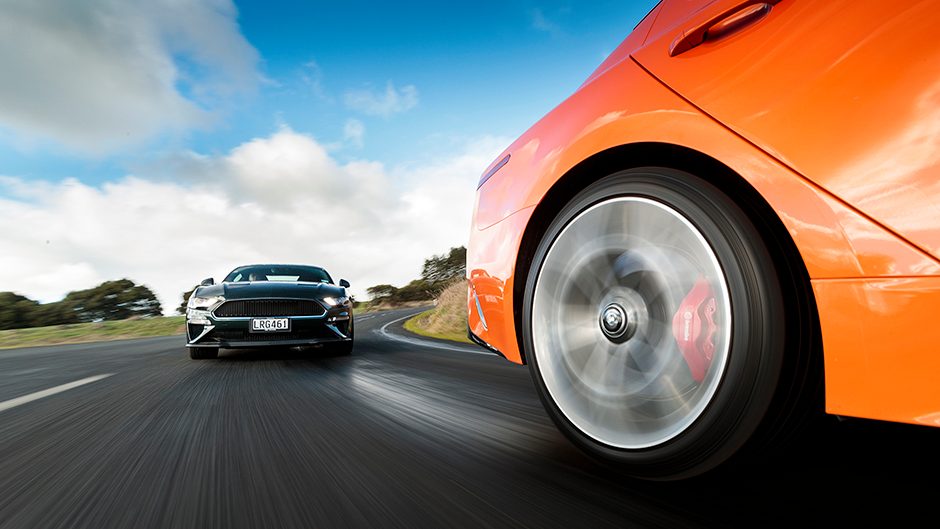
We’re often asked by interested parties about the two cars, despite the differences, but both of these go-hard rear drivers loom large on the buying radar of a certain demographic. Okay, so one is a two-door coupe and the other is five-door liftback. The Kia can tote four adults in relative comfort, whereas the Mustang’s rear accommodations are essentially +2. We squashed a compliant adult female in the rear of the Bullitt (back seat, not boot) and she reckoned there was sufficient room but the angled body position suggested otherwise.
Be that as it may, we still wanted to compare these superficially disparate rear-drive GTs simply because they’re loud and immense fun, even if they come at the GT paradigm from different angles. But are you giving up much in the way of driving pleasure by opting for the more practical Kia, and pocketing the $10k difference?
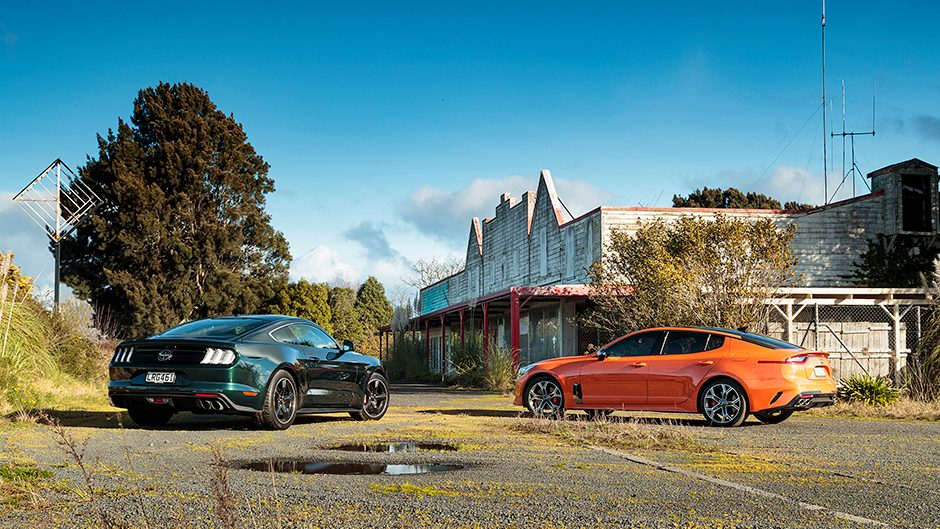
Korean the value offering
The Stinger GT Sport starts life at $69,990 and offers more gear for less money. Selecting the Kia is the head-over-heart choice, as it has five doors to the two of the Mustang and is also better specified. The Bullitt comes with a six-speed manual topped off with a cue-ball shifter. It costs $12,500 more than a regular Mustang GT, getting items like powered Recaro seats and MagneRide adaptive dampers fitted standard, along with special period 19-inch five-spoke wheels and an updated electronics safety package.
There are subtle cosmetic changes too. A modified intake that includes a pod filter along with exhaust mods adds six kW for a total of 345, but the peak torque figure is unchanged (556Nm at 4600rpm). The manual transmission has an autoblipping downshift function, while there’s a host of drive modes, and brakes are by Brembo. On that, the Stinger also gets the uprated Italian calipers clamping onto bigger discs. Even more coincidental, and almost unbelievable is virtually identical sized holds, 406L for the Kia, 408L for the Mustang. The former also gets a powered hatch.
The standard Mustang GT comes with B&O 12-speakers sounds, sat nav, trip computer, dual exhausts with active valving, six-piston Brembo front brakes, and active cruise. Aside from the usual electronic safety items, the Mustang gets AEB, lane departure warning/keeping, a reversing camera and seven airbags. It hasn’t been ANCAP tested since 2017 when it merited three stars. Kia scores five.
The Stinger comes with a panoramic sunroof, quad exhausts, head-up display, a powered steering column and self-retracting seats for easy entry, and smart cruise that works down to zero (20km/h for Mustang). Like the Ford it comes with 19-inch alloys, a limited slip diff, comfort entry and pushbutton start, heated and vented seats, and LED headlights but they’re adaptive in the Kia which also gets active damping.
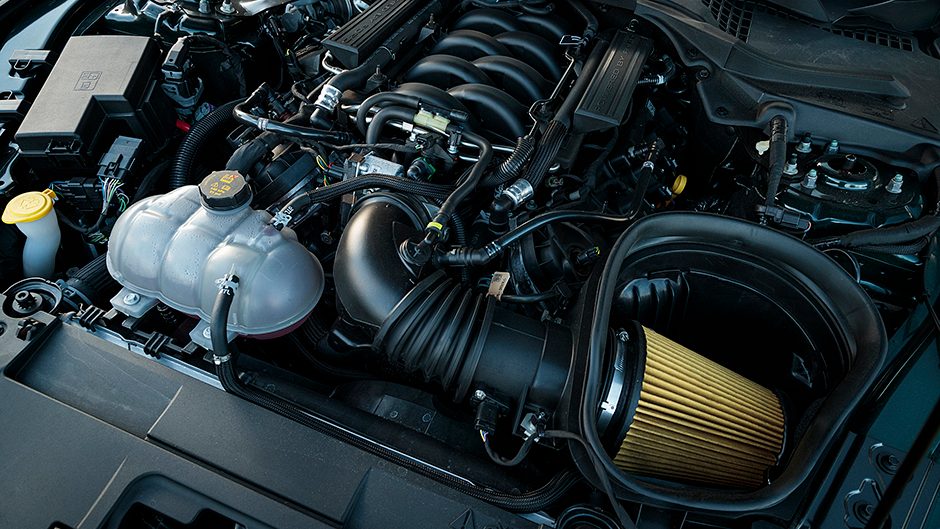
Design favours the Ford
The latest Mustang update gives the Fastback an even more aggressive look, lights in particular, yet it still retains the unmistakable classic coupe outline. It’s aggro from just about any angle, the new LED peepers seeking out all comers.
Clearly the Kia appeals as well; the company has consistently sold at least 20 examples every month since it dotted down in 2017. Coincidentally, the same can be said of the Mustang V8. The Kia’s long bonnet and cab rearward stance hint at the rear drive set-up beneath. We’re not so sure about the reflectors that extend into the rear guards, and the headlights seem oversized, dating it a bit but inside is well conceived, with big legible dials, an easy to use mode button, nice seats and intuitive ergos.
Familiarisation is much easier than in the Mustang which features items like toggle switches (one of which was never designed to spool through six drive modes). There’s a lot happening on the steering wheel, and it’s easy to overlook items like the setting icon on the right side. We only found the fuel use figures by accident when messing with the button that has the pony symbol on it. Mention of, the pony puddle lamps are superb.
Back to fuel use, we thought the mid-13s average was pretty impressive for something that has a claimed combined figure of 13.0 anyway. As mentioned, the 5.0L V8 outputs more power and torque but the latter peaks at 4600rpm. The twin-turbo 3.3-litre V6 mill of the Stinger GT generates 510Nm from 1300-4500rpm. So while its 272kW is down 73 units on the Ford, it gets into its stride quicker. Weights are fairly comparable, the five-door heavier by less than 50kg. Kia rates Stinger as a 4.9sec car. Evidently the performance exhaust has no bearing on power or torque figures.
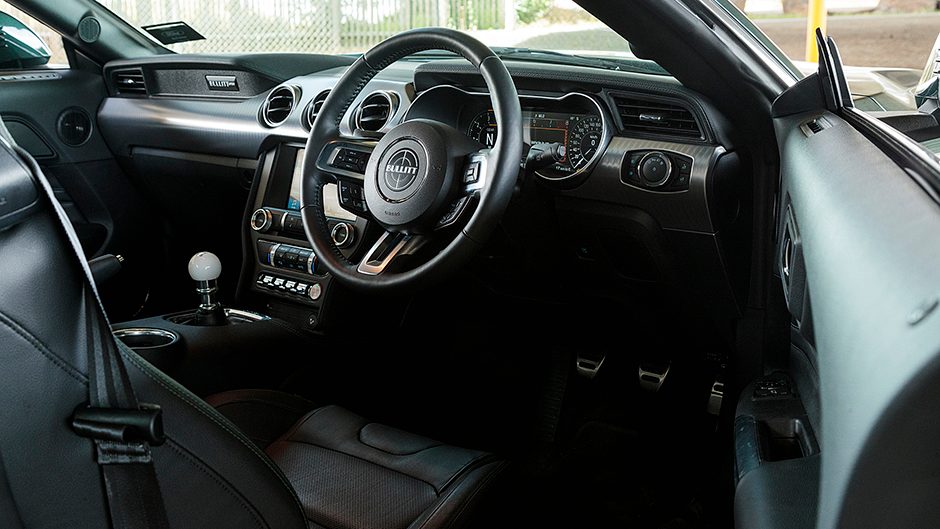
So which is quicker?
A powerful rear-drive V8 with a manual transmission is amongst the hardest of vehicles to performance test. With atmo engines, more revs are needed to prevent bogging. Too many and it’s wheel spin city. Not helping are tyres almost 7000km old, and cool road conditions. The excuses just keep piling up but I couldn’t persuade the Bullitt to a time below 5.0sec. However, it was the same for the Ed when he drove it so we’ll go with his best of 5.15sec.
A 10-speed auto version managed 4.87sec. And the Stinger? Last time out we got one run a poofteenth under 5sec but this time with the orange beast, it kicked off with a 4.99sec run, followed by a 4.85sec blast with TC on. With TC off, it managed a best of 4.69sec. That exhaust might not liberate any more power in theory but the numbers suggest otherwise. And as for overtaking? Well the V8 consistently outran the forced V6, registering an 80-120 best of 2.49sec, but the Stinger’s fastest passing manoeuvre of 2.77sec wasn’t far behind. Again, that’s 0.2sec quicker than we’ve had from any Stinger previously.
The Kia’s new exhaust is louder for sure than the standard item, especially when the valves open at around 3000rpm, so perhaps it is also freer flowing. It burbles nicely at the 2800rpm resonance point. But up against the Mustang’s V8 exhaust there’s no contest. But then very little can hold a candle to the sonics of the speeding Bullitt.
On an equally exalted level, the shift action of the manual Mustang is superlative, amongst the best I’ve encountered, especially with the blip downshifting feature engaged. On roads that matter you’re forever shuffling between second, third and fourth gears, keeping the engine on the boil. It works best from about 4500-6500rpm, though anything above 3500rpm and it’s happy to comply. Even 2000-3000rpm has this slipping along merrily, while in town it pulls from a bit over 1000rpm with interest.
And the Kia? Despite the power to weight deficit, it compensates with that pair of blowers, so the torque is on earlier than with the V8. In the Sport mode it feels genuinely keen from 2000-3000rpm, and laughably quick from 3500-4500. Both of these cars have Brembos and each stops brilliantly.
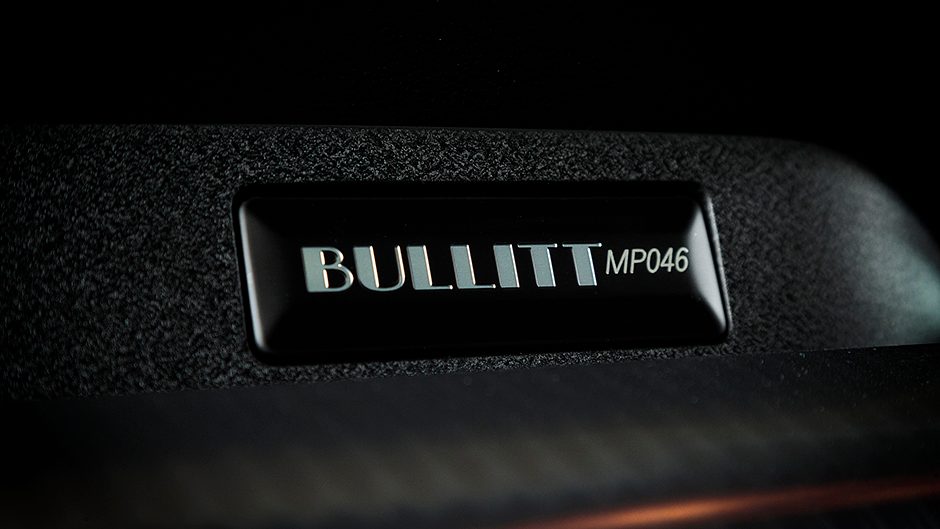
What about round corners?
The handling of each is typically rear drive, the back end keen to help turn the front in. That’s especially true of the Kia, the torque hit wanting to unstick the 255 rears more than 275s on the back of the ‘Stang. With a near even weight split, each unwinds technical back roads with aplomb, the Kia a bit more confident in the rear with its lower profile rubber and longer wheelbase, which also benefits straight line stability at speed.
They’re both excellent steers but then anything without drive to the front wheels seems like an upgrade, right? The MagneRide adaptive dampers give a sporty ride quality to the Mustang, becoming bony only in the Track mode. We found in Sport that the adaptive dampers in the Stinger pick up and transfer smaller road imperfections. Fortunately, there’s a Smart mode which minimises this effect. The car actually handles and rides pretty well in Comfort mode, preferable if you have passengers.
| Model | Ford Mustang Bullitt | Price | $93,490 |
| Engine | 5038cc, V8, EFI, 345kW/556Nm | Drivetrain | 6-speed manual, rear-wheel drive |
| Fuel Use | 13L/100km | C02 Output | 299g/km |
| 0-100km/h | 5.15sec | Weight | 1776kg |
| Model | Kia Stinger GT Sport Neon Orange Pack | Price | $69,990 |
| Engine | 3342cc, V6, T/DI, 272kW/510Nm | Drivetrain | 8-speed auto, rear-wheel drive |
| Fuel Use | 10.2L/100km | C02 Output | 239g/km |
| 0-100km/h | 4.69sec | Weight | 1794kg |


